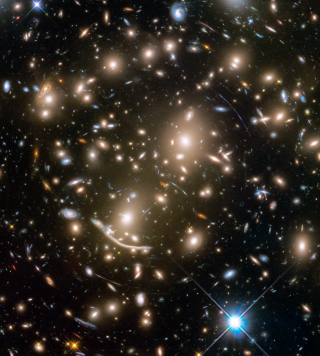Bibcode
Sánchez-Blázquez, P.; Rosales-Ortega, F. F.; Méndez-Abreu, J.; Pérez, I.; Sánchez, S. F.; Zibetti, S.; Aguerri, J. A. L.; Bland-Hawthorn, J.; Catalán-Torrecilla, C.; Cid Fernandes, R.; de Amorim, A.; de Lorenzo-Caceres, A.; Falcón-Barroso, J.; Galazzi, A.; García Benito, R.; Gil de Paz, A.; González Delgado, R.; Husemann, B.; Iglesias-Páramo, Jorge; Jungwiert, B.; Marino, R. A.; Márquez, I.; Mast, D.; Mendoza, M. A.; Mollá, M.; Papaderos, P.; Ruiz-Lara, T.; van de Ven, G.; Walcher, C. J.; Wisotzki, L.
Referencia bibliográfica
Astronomy and Astrophysics, Volume 570, id.A6, 85 pp.
Fecha de publicación:
10
2014
Revista
Número de citas
190
Número de citas referidas
180
Descripción
While studies of gas-phase metallicity gradients in disc galaxies are
common, very little has been done towards the acquisition of stellar
abundance gradients in the same regions. We present here a comparative
study of the stellar metallicity and age distributions in a sample of 62
nearly face-on, spiral galaxies with and without bars, using data from
the CALIFA survey. We measure the slopes of the gradients and study
their relation with other properties of the galaxies. We find that the
mean stellar age and metallicity gradients in the disc are shallow and
negative. Furthermore, when normalized to the effective radius of the
disc, the slope of the stellar population gradients does not correlate
with the mass or with the morphological type of the galaxies. In
contrast to this, the values of both age and metallicity at ~2.5 scale
lengths correlate with the central velocity dispersion in a similar
manner to the central values of the bulges, although bulges show, on
average, older ages and higher metallicities than the discs. One of the
goals of the present paper is to test the theoretical prediction that
non-linear coupling between the bar and the spiral arms is an efficient
mechanism for producing radial migrations across significant distances
within discs. The process of radial migration should flatten the stellar
metallicity gradient with time and, therefore, we would expect flatter
stellar metallicity gradients in barred galaxies. However, we do not
find any difference in the metallicity or age gradients between galaxies
with and without bars. We discuss possible scenarios that can lead to
this lack of difference.
Tables 1-3 and Appendices are available in electronic form at http://www.aanda.org
Proyectos relacionados

Evolución de Galaxias en Cúmulos
Las estructuras en el Universo, a todas las escalas de masa, se han formado de una forma jerárquica y principalmente producidas por fusiones de galaxias. Sin embargo, esta formación jerárquica de las galaxias está modulada por el entorno en el cual se crean y evolucionan. Mientras que las galaxias de campo presentan una evolución pasiva, los
Jairo
Méndez Abreu

Huellas de la Formación de las Galaxias: Poblaciones estelares, Dinámica y Morfología
Bienvenida a la página web del g rupo de investigación Traces of Galaxy Formation. Somos un grupo de investigación amplio, diverso y muy activo cuyo objetivo principal es entender la formación de galaxias en el Universo de una manera lo más completa posible. Con el estudio detellado de las poblaciones estelares como bandera, estamos constantemente
Anna
Ferré Mateu